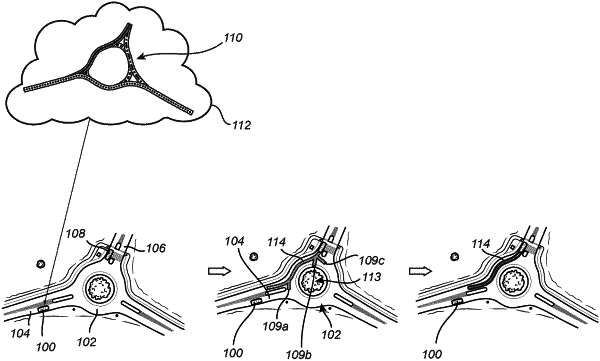| CPC B60W 30/09 (2013.01) [B60Q 9/008 (2013.01); B60W 30/0956 (2013.01); B60W 50/0097 (2013.01); B60W 50/14 (2013.01); G06N 3/08 (2013.01); B60W 2050/0031 (2013.01); B60W 2420/42 (2013.01); B60W 2554/80 (2020.02); B60W 2555/20 (2020.02); B60W 2555/60 (2020.02)] | 15 Claims |

|
1. A method for predicting a trajectory of at least one secondary road user for avoiding a collision course with the secondary road user for a host vehicle, the method comprising:
using a positioning system, determining a present location for the host vehicle;
using a vehicle control unit, retrieving from a server a plurality of previously modelled and stored clusters of trajectories for a present traffic situation in a vicinity of the present location, created based on a supervised learning algorithm trained on training data comprising trajectory data for a plurality of traffic situations for which scene data is available;
using the vehicle control unit and the supervised learning algorithm, filtering out a sub-class of model trajectories based on traffic object data indicative of the present traffic situation, wherein the traffic object data comprises at least information about traffic objects blocking potential paths for the secondary road user;
using at least one detection unit, detecting a position and speed of the at least one secondary road user in the vicinity of the present traffic situation;
using the vehicle control unit, determining at least one feasible trajectory for the at least one secondary road user based on the position and the speed of the at least one secondary road user and the plurality of previously modelled and stored clusters of trajectories for the present traffic situation excluding the filtered out sub-class of model trajectories based on the present traffic situation, wherein the position of the at least one secondary road user is compared to positions of the plurality of previously modelled and stored clusters of trajectories for the present traffic situation excluding the filtered out sub-class of model trajectories;
using the vehicle control unit, selecting at least one of the determined at least one feasible trajectory for each secondary road user based on a selection criterion for the secondary road user indicating at least one feasible trajectory that is safe for the secondary road user and based on a selection criterion for the host vehicle related to host vehicle drive preferences, and
using the vehicle control unit, performing at least one action based on the selected at least one feasible trajectory.
|